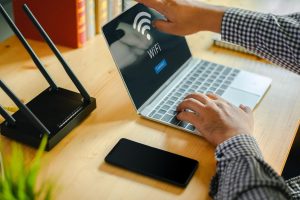Few employers equip their remote workers with the tech they need to do their jobs, which means if you are working remotely, you are almost certainly using your devices. This can be convenient; it means that you are familiar with your devices and comfortable using them for a variety of tasks, so your workflow can be smooth and efficient. However, mixing the tech of work and home also comes with some dangers — and not all employers take appropriate precautions to protect themselves or their remote workers from those threats.
There are good reasons for taking special care to separate work and life on your device. You don’t want any of your activity to result in malware that infiltrates and infects your coworkers’ devices, and you don’t want any attacks on your employer’s networks to cause damage to your device. If you are unimpressed by the measures requested by your employer’s BYOD security policy, here are some additional precautions you might take to keep your remote working tools safe.
Install Better Antivirus on Your Device
Your device probably has some level of built-in security solutions attached to its operating system — but that isn’t nearly enough to keep you safe from the variety and sheer number of threats present online. Instead, you need a robust antivirus solution that uses advanced methods of identifying and thwarting evolving cyber threats. In truth, every internet-connected device should be equipped with strong antivirus protections, but it is even more important that the personal device you use for work has an antivirus system installed. Then, you won’t have to worry about any increased web activity you practice resulting in an infected and unusable device, and any malware you encounter on or off the clock will impact neither you nor your employer’s network.
Automatically Update All Software
Another bit of cybersecurity advice that absolutely everyone should follow: You need to be certain that all of the programs on your device are receiving regular updates. Over time, the codes that keep software operational on your device can manifest vulnerabilities, which savvy cybercriminals know how to exploit to gain access to your device and your data. If this happens on your work device, you could be welcoming cyber attackers onto your company’s network, where they could make off with unknown quantities of consumer data and ill-gotten financial gains. Therefore, you should set every application on your device to automatically download and install updates, ideally during your non-working hours but certainly as soon as possible after they are released.
Use a VPN for All Work Activity
Every device has a unique digital address that allows it to communicate effectively with other devices on the internet. The problem is that sometimes, bad actors will track those addresses and use them to collect data about a device which allows them to launch successful cyber attacks. These addresses are particularly useful when devices are already connected to the same network, which usually happens in public places like airports or coffee shops.
If you travel often for work, you should seriously consider hiding your device’s address with a virtual private network, or VPN. A VPN functions as a tunnel through which your device can access the internet; it obscures all of your personal information, making it almost impossible for others to know where you are, who you are, and what you are doing. You might even use a VPN when you are working from home to keep both your home network and your business’s network completely safe.
Consider Separate Encryption for Work and Personal Files
Encryption is an easy and almost foolproof method of keeping your data safe from attackers who gain access to your device. However, instead of encrypting all of your files under the same key, you might consider creating another layer of separation between personal files and work-related files by encrypting them differently. Then, if a malware attack or some other form of intrusion does compromise the integrity of one type of encryption, at least the other half of your device can be kept safe. While you’re at it, you might back up your personal and work files to different clouds or hard drives to ensure that the data for work and play never mix.
During the onboarding process, you should research and read your company’s tech policy at least twice to ensure you understand all the rules and regulations for your device. Then, you can take whatever measures you see fit to keep yourself and your device safe.












